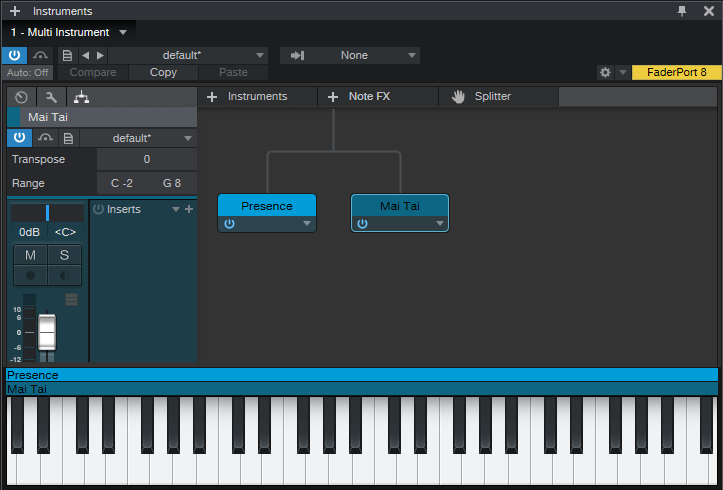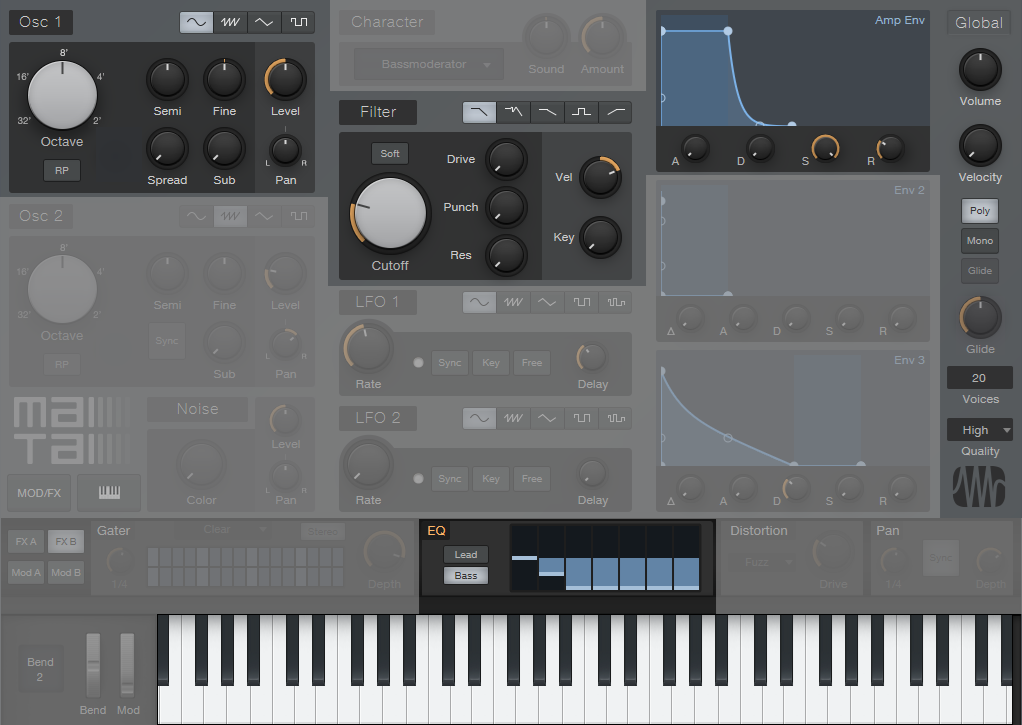The Really Grand Piano
Having worked on several classical and piano-oriented sessions, I’ve had the opportunity to hear gorgeous grand pianos in their native habitat. But it spoiled me. When I had to use sampled pianos in other types of productions, it always seemed something was missing.
This tip puts some of the low-end mojo back into sampled pianos. Sure, it’s done with smoke and mirrors, not by having wood interact with a room—but check out the audio example at the end, and you’ll hear what Beethoven has to say about it.
How It Works
The bass enhancement occurs by mixing a sine wave behind the main piano sound, but only in the lower octaves, and very subtly. This adds bass reinforcement that you won’t find in samples.
Set up a Multi-Instrument (sorry Artist users, this is a Pro version-only feature) that combines the piano of your choice, like the Presence Acoustic Full, and Mai Tai (fig. 1).
For Mai Tai, you want the simplest sound possible—one sine wave oscillator, no modulation except for an amplitude envelope, no random phase, and no effects other than EQ. By turning the Filter cutoff down to around 100 Hz or so, turning Key tracking all the way down, and using the EQ (in the bass range) to take out all the highs, we now have the sine wave tracking your playing on only the lowest notes (fig. 2).
Tweaking
The Mai Tai’s level setting is crucial. You want an almost subliminal effect—something you don’t notice unless you mute the Mai Tai. Check out this audio example, but note that I’ve mixed the Mai Tai up higher than I normally would, so you can hear what the sine wave adds to the piano sound. Also note that even with the extra emphasis on the lower octaves, you can’t hear an added sine wave on the higher notes. This is important for a realistic sound.
Finally, although I’ve emphasized using this with piano, the same technique can add a commanding low end to other sampled instruments, like acoustic guitar—yes, you can change your parlor guitar’s body into a jumbo—no woodworking required!


